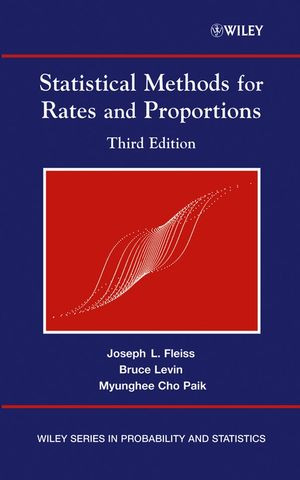

Most ebook files are in PDF format, so you can easily read them using various software such as Foxit Reader or directly on the Google Chrome browser.
Some ebook files are released by publishers in other formats such as .awz, .mobi, .epub, .fb2, etc. You may need to install specific software to read these formats on mobile/PC, such as Calibre.
Please read the tutorial at this link: https://ebookbell.com/faq
We offer FREE conversion to the popular formats you request; however, this may take some time. Therefore, right after payment, please email us, and we will try to provide the service as quickly as possible.
For some exceptional file formats or broken links (if any), please refrain from opening any disputes. Instead, email us first, and we will try to assist within a maximum of 6 hours.
EbookBell Team

0.0
0 reviewsIn the two decades since the second edition of Statistical Methods for Rates and Proportions was published, evolving technologies and new methodologies have significantly changed the way today’s statistics are viewed and handled. The explosive development of personal computing and statistical software has facilitated the sophisticated analysis of data, putting capabilities that were once the domain of specialists into the hands of every researcher.
The Third Edition of this important text addresses these changes and brings the literature up to date. While the previous edition focused on the use of desktop and handheld calculators, the new edition takes full advantage of modern computing power without losing the elegant simplicity that made the text so popular with students and practitioners alike. In authoritative yet clear terminology, the authors have brought the science of data analysis up to date without compromising its accessibility.
Features of the Third Edition include:
Combining the latest research with the original studies that established the previous editions as leaders in the field, Statistical Methods for Rates and Proportions, Third Edition will continue to be an invaluable resource for students, statisticians, biostatisticians, and epidemiologists.Content:
Chapter 1 An Introduction to Applied Probability (pages 1–16):
Chapter 2 Statistical Inference for a Single Proportion (pages 17–49):
Chapter 3 Assessing Significance in a Fourfold Table (pages 50–63):
Chapter 4 Determining Sample Sizes Needed to Detect a Difference between Two Proportions (pages 64–85):
Chapter 5 How to Randomize (pages 86–94):
Chapter 6 Comparative Studies: Cross?Sectional, Naturalistic, Or Multinomial Sampling (pages 95–143):
Chapter 7 Comparative Studies: Prospective and Retrospective Sampling (pages 144–158):
Chapter 8 Randomized Controlled Trials (pages 159–186):
Chapter 9 The Comparison of Proportions from Several Independent Samples (pages 187–233):
Chapter 10 Combining Evidence from Fourfold Tables (pages 234–283):
Chapter 11 Logistic Regression (pages 284–339):
Chapter 12 Poisson Regression (pages 340–372):
Chapter 13 The Analysis of Data from Matched Samples (pages 373–406):
Chapter 14 Regression Models for Matched Samples (pages 407–439):
Chapter 15 Analysis of Correlated Binary Data (pages 440–490):
Chapter 16 Missing Data (pages 491–560):
Chapter 17 Misclassification: Effects, Control, and Adjustment (pages 561–597):
Chapter 18 The Measurement of Interrater Agreement (pages 598–626):
Chapter 19 The Standardization of Rates (pages 627–647):